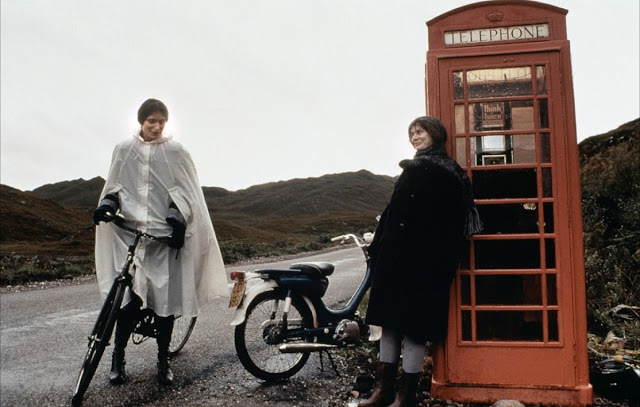Bess McNeill is a pretty young Scottish woman with a history of psychological problems. She marries atheist oil rig worker Jan Nyman, despite disapproval from her community and her Free Scottish Presbyterian Calvinist church. Bess is steadfast and pure of heart, but extremely simple and childlike in her beliefs. During her frequent visits to the church, she prays to God and carries on conversations with Him using her own voice, believing that He is responding directly through her.
Bess has difficulty living without Jan when he is away on the oil platform. Jan makes occasional phone calls to Bess in which they express their love and sexual desires. Bess grows needy and prays for his immediate return. The next day, Jan is severely injured in an industrial accident and is flown back to the mainland. Bess believes her prayer was the reason the accident occurred, that God was punishing her for her selfishness in asking for him to neglect his job and come back to her. No longer able to perform sexually and mentally affected by the paralysis, Jan asks Bess to find a lover. Bess is devastated and storms out. Jan then attempts to commit suicide and fails. He falls unconscious and is readmitted to hospital.
Jan's condition deteriorates. He urges Bess to find another lover and
tell him the details, as it will be as if they are together and will
revitalize his spirits. Though her sister-in-law Dodo constantly
reassures her that nothing she does will affect his recovery, Bess
begins to believe these suggestions are the will of God and in
accordance with loving Jan wholly. Despite her repulsion and inner
turmoil to be with other men, she perseveres in her own sexual
debasement as she believes it will cure her husband. Bess throws herself
at Jan's doctor, but when he rebuffs her, she takes to picking up men
off the street and allowing herself to be brutalized in increasingly
cruel sexual encounters. The entire village is scandalized by these
doings, and Bess is excommunicated. In the face of being cast out from
her church, she proclaims, "You cannot love words. You cannot be in love
with the Word. You can only love a human being."
Dodo and Jan's doctor agree the only way to keep Bess safe from herself
is to have her committed, and as far away from her husband as possible.
It is then that Bess decides to make what she thinks is the ultimate
sacrifice for Jan: she unflinchingly goes out to a derelict ship full of
barbarous sailors, who rape and murder her. The church refuses to give a
funeral for her and damns her soul to hell. Jan is later shown burying
her in the ocean, in deep grief but fully restored to health. The film
ends as church bells ring in the sky.
The film is divided into seven different chapters. Each chapter begins
with a different impressionistically filmed panorama title frame
featuring early 1970s rock music interludes. Each of these chapters is
filmed with a motionless camera, but features movement in the panorama.
In the original released film, the epilogue, “Bess' Funeral,” features David Bowie’s “Life on Mars," which was replaced by Elton John's "Your Song"
on early home video releases; the more recent Criterion edition
restores the Bowie song. The overall style is heavily influenced by the realist Dogme 95
movement, of which von Trier was a founding member, and its grainy
images and hand-held photography give it the superficial aesthetic of a
Dogme film. However, the Dogme rules demand the use of real locations,
whereas many of the locations in Breaking the Waves were constructed in a studio.
In addition, the film is set in the past and contains dubbed music, as
well as a brief scene featuring CGI, none of which is permitted by the
Dogme rules.








No comments:
Post a Comment